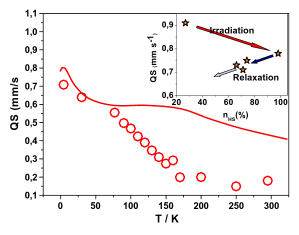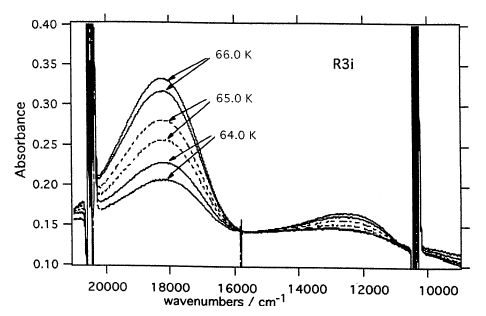
|
Photophysics and Photochemistry of Transition Metal Compounds |
| Home Research Members Collaborations Publications |

|
 |
|||||||
The spin-transition (1A1↔5T2) behaviour of a new mononuclear iron(II) compound [FeII(L)3][PF6]2[L = 2-[3-(2′-pyridyl)pyrazole-1-ylmethyl]pyridine] has been investigated by 57Fe Mössbauer spectroscopy. Analysis of the Mössbauer spectra revealed low value of the quadrupole splitting of the high-spin state which reflects iron(II) to be in nearly cubic lattice site. Mössbauer spectra under light show the light-induced excited spin state trapping effect and the observed quadrupole splitting of the metastable high-spin state is found little sensitive to the high-spin fraction value. DFT calculations are in progress to document the almost cubic nature of the ligand-field acting on the iron atom. | ||||||||
|
||||||||
We report an in-depth theoretical study of 4-styrylpyridine in its singlet S0 ground state. The geometries and the relative stabilities of the trans and cis isomers were investigated within density functional theory (DFT) as well as within Hartree-Fock (HF), second-order Møller-Plesset (MP2), and coupled cluster (CC) theories. The DFT calculations were performed using the B3LYP and PBE functionals, with basis sets of different qualities, and gave results that are very consistent with each other. The molecular structure is thus predicted to be planar at the energy minimum, which is associated with the trans conformation, and to become markedly twisted at the minimum of higher energy, which is associated with the cis conformation. The results of the calculations performed with the post-HF methods approach those obtained with the DFT methods, provided that the level of treatment of the electronic correlation is high enough and that sufficiently flexible basis sets are used. Calculations carried out within DFT also allowed the determination of the geometry and the energy of the molecule at the biradicaloid transition state associated with the thermal cis ↔trans isomerization and at the transition states associated with the enantiomerization of the cis isomer and with the rotations of the pyridinyl and phenyl groups in the trans and cis isomers. Car-Parrinello molecular dynamics simulations were also performed at 50, 150, and 300 K using the PBE functional. The studies allowed us to evidence the highly flexible nature of the molecule in both conformations. In particular, the trans isomer was found to exist mainly in a nonplanar form at finite temperatures, while the rotation of the pyridinyl ring in the cis isomer was incidentally observed to take place within ≈1 ps during the simulation carried out at 150 K on this isomer. | ||||||||
 |
|
|||||||
The quasi-static nature of a light induced thermal hysteresis was studied on the spin-transition compound [Fe(ptz)6](BF4)2, by means of optical spectroscopy and magnetic measurements in the temperature interval between 10 and 80 K. Various experimental procedures are discussed in relation to the competition between the two processes considered, namely the photoexitation and the high-spin→low-spin relaxation. A detailed discussion of the experimental parameters, which should be considered in order to avoid erroneous interpretations of LITH, is given. | ||||||||
Download this list in format RIS
 EndNote
EndNote  BibTex
BibTex  PDF XML
PDF XML Last update Friday December 08 2017